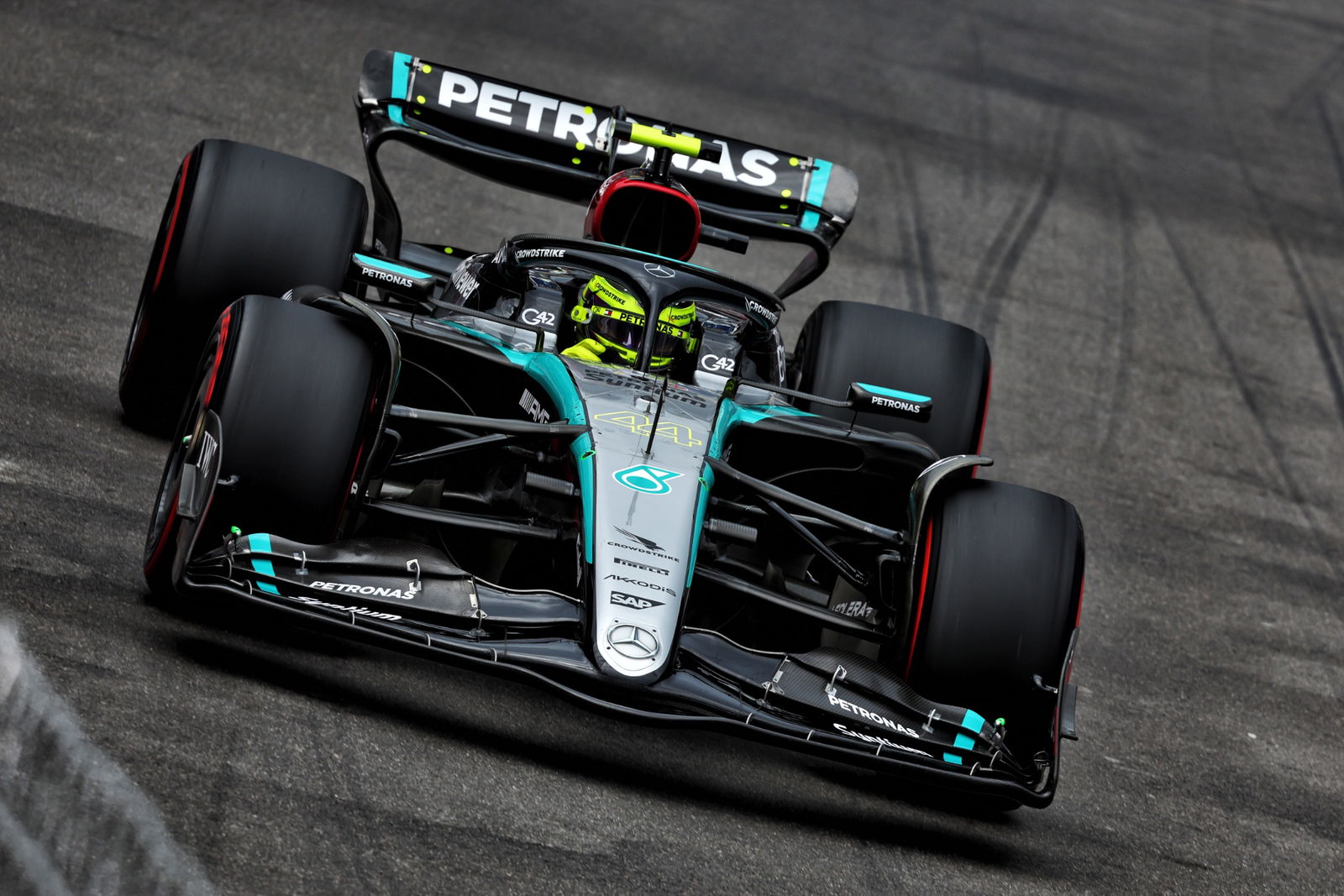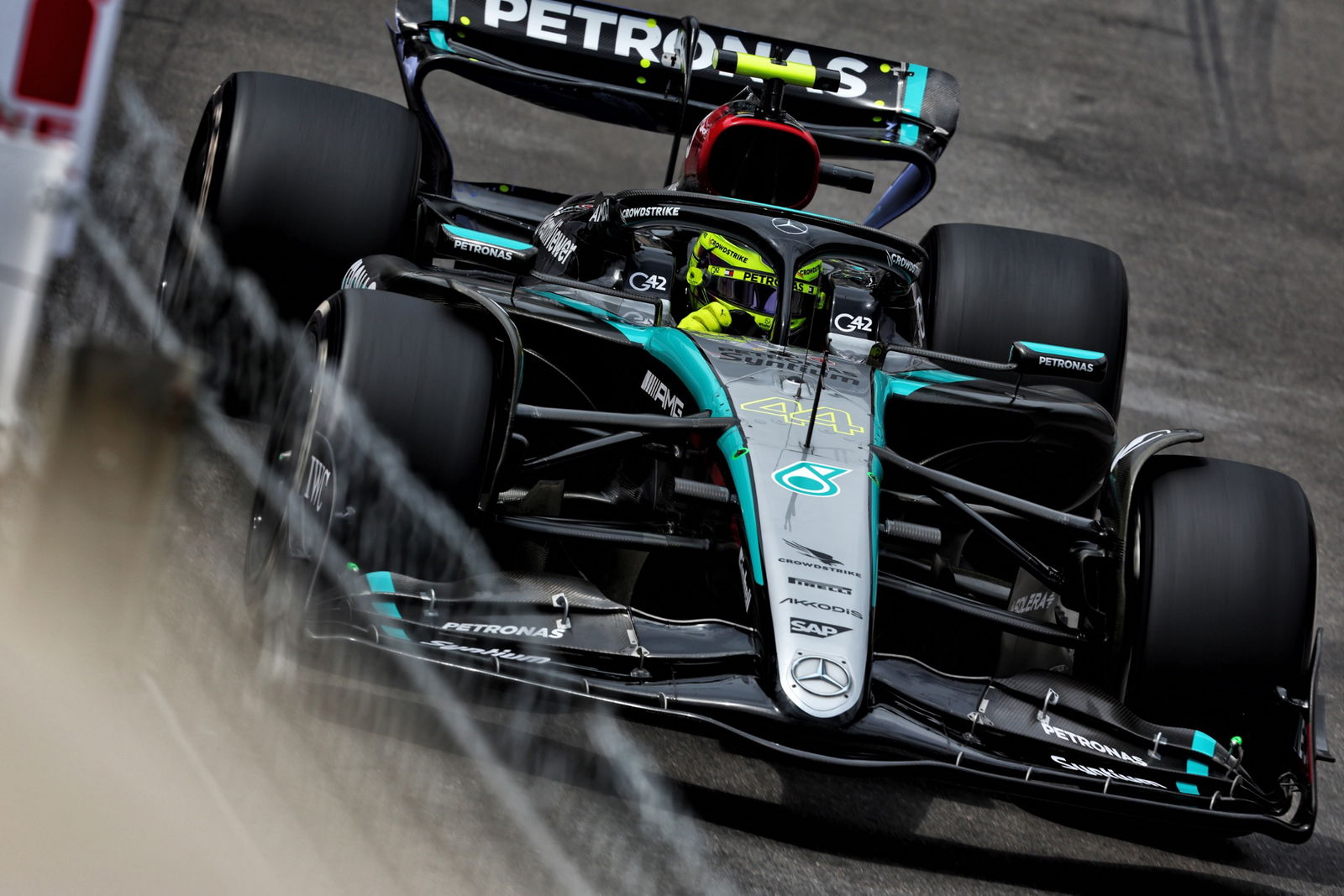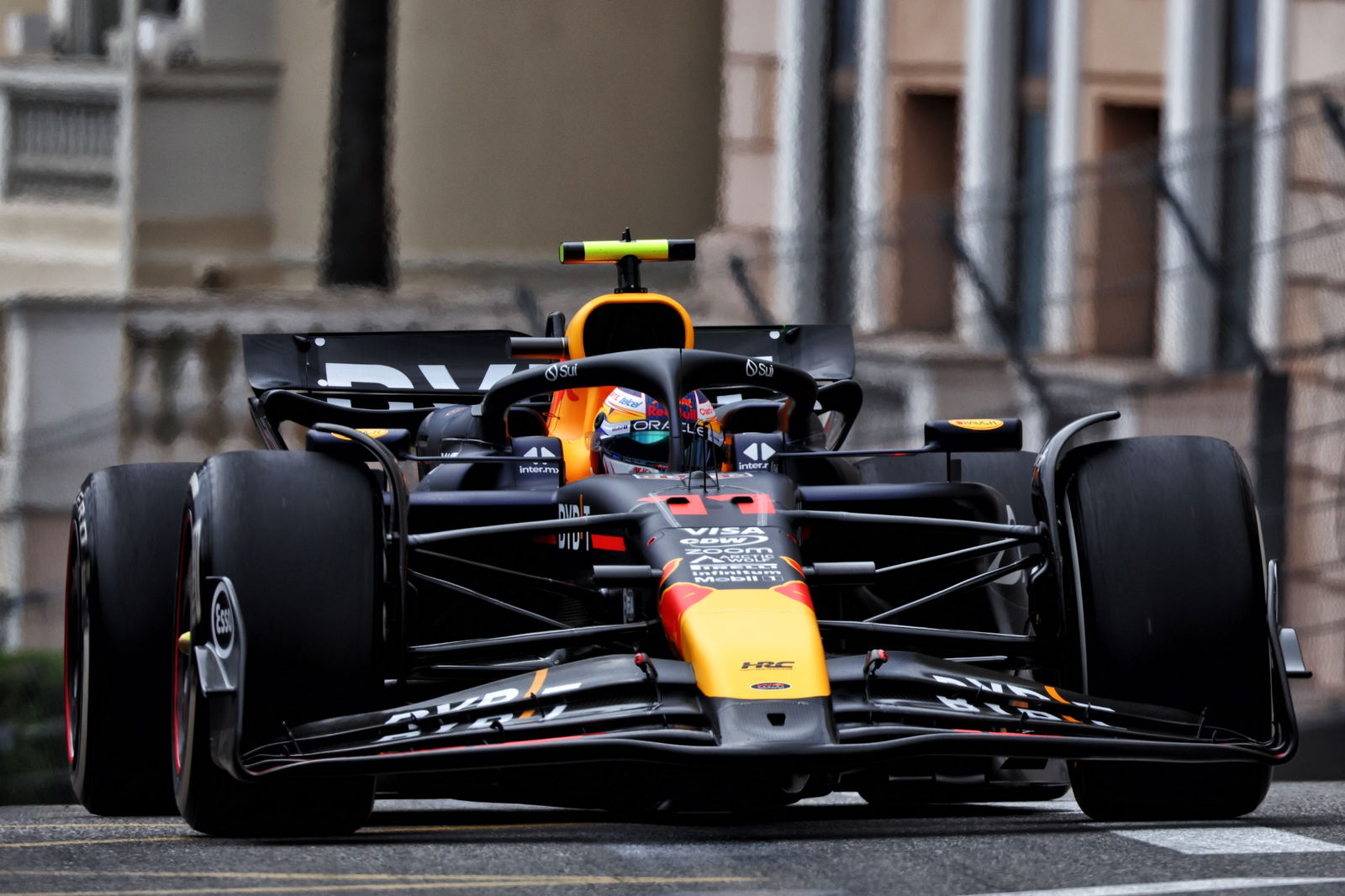Explained: Insight into Mercedes’ new front wing after impressive Monaco pace
A look at Mercedes’ new front wing which George Russell ran in Monaco first wing.

Mercedes’ new innovative F1 front wing caught the eye on Friday at the Monaco Grand Prix.
The Brackley-based outfit topped the timesheets in first practice in Monte Carlo, with Lewis Hamilton leading the way.
George Russell finished third as Mercedes kicked off their Monaco weekend in impressive fashion.
Mercedes have introduced a number of new parts for this weekend, particularly around the front wing.
Explaining the purpose of it, Mercedes noted: “Larger chord inboard flap and redistribution of main plane chord. Increasing inboard flap chord has increased the balance range of the front wing; redistribution of the outboard element chord has altered tip vorticity and improved tyre wake control.”
Mercedes also have a new rear wing and floor body, looking to increase performance on the tight streets of the principality.
Sky Sports F1’s Ted Kravitz offered some insight into the front wing - and revealed that Hamilton was running the old version as he topped the order in FP1.
“The area of the front wing around the Mercedes [logo],” he said. They have this slightly reduced central section closest to the nose cone. It has this little legality strip of metal on there. It’s been there for the whole season. That was the front wing that Lewis Hamilton was running in that session [FP1].
“On George Russell’s front wing, the central section of the front wing either side of the nose - Akodis logo, it is new. Russell was running the new front wing in that session and was slower.”

Mercedes have tried to focus on improving the balance and consistency of the W14 in 2024.
As explained by Kravitz, Mercedes are looking to “increase the balance range” of their car.
“The increase of the inboard flap cord actually increases the balance range of the wing,” he added. “That allows them a bit more flexibility to add or decrease the amount of front downforce gained by that front wing. So you’re asking yourself did it work given Russell was on the new wing and Lewis was on the old - what does that say? Why was Lewis quicker? It’s not down to the front wing, the team says.
“Evidently, Russell had a big front axle and brake vibration which was limiting his progress throughout that practice session so that didn’t make a true read or effectiveness of the front wing pretty tricky.
“They do believe it’s doing what it should be even though the benefit of downforce, of wings, here is a little bit decreased compared to some other circuits we’ve gone to recently. This kind of development on the Mercedes is where they’re doing.”


